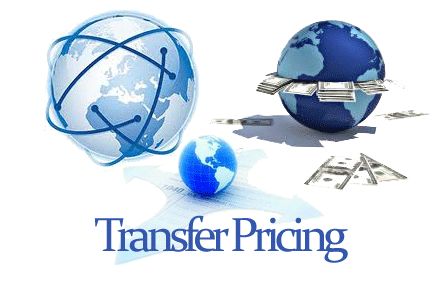If you were wondering what transfer pricing system is all about please take your time to read this article. Because failing to follow transfer pricing guidelines might expose your company to financial danger.
You will understand the concept of transfer pricing after reading this article. To begin, we will give the definition of transfer pricing. Following that, you will learn about the financial hazards you may face if you do not take the necessary procedures. Finally, you will discover the requirements your company must meet.
Definition of Transfer Pricing
The prices of goods and services traded between enterprises under common control are referred to as transfer pricing. For example, if a subsidiary firm sells items or provides services to its parent company or a sister company. The price charged is known as the transfer price.
From the definition of transfer pricing, we can say that entities under common control are those whose ultimate control is held by a single parent corporation. It is a mechanism used by multinational organizations to allocate profits (earnings before interest and taxes) across their numerous subsidiaries within the organization.
Transfer pricing system provide various tax benefits to a corporation. However, regulatory agencies frequently frown on the manipulation of transfer prices to minimize taxes. Transfer pricing that is both effective and legal takes advantage of varied tax regimes in different nations by increasing transfer prices for goods and services produced in countries with lower tax rates.
In some situations, corporations can even save money on interconnected transactions by avoiding tariffs on goods and services traded globally. The Organization for Economic Cooperation and Development (OECD) governs international tax regulations, and OECD auditing firms analyze and audit MNC financial accounts accordingly. Now that we have seen the definition of this transfer pricing, let’s see the importance of the rules.
What Is the Purpose of Transfer Pricing Rules?
Tax rates range significantly between countries. If left unchecked, the practice could result in earnings transferring from high-tax countries to low(er)-tax countries.
Although less likely, the pricing scheme may result in corporations reporting too much tax in high-tax nations and too little tax in low-tax ones.
The primary purpose of transfer pricing regulation is to prevent both scenarios and to ensure that profits are taxed where value is created.
Transfer Pricing Example
Consider ABC Co., a pen manufacturer in the United States that sells pens for ten cents each. ABC Co.’s Canadian subsidiary, XYZ Co., sells the pens for $1 to Canadian clients and spends 10 cents per pen on marketing and distribution. The overall profit of the group is 80 cents for each pen.
ABC Co. will now charge it’s subsidiary a transfer fee ranging from 20 cents to 80 cents per pen. In the absence of transfer price rules, ABC Co. will choose the country with the lowest tax rates and strive to maximize profits in that country. As a result, if US tax rates are greater than Canadian tax rates, the corporation will most likely allocate the lowest possible transfer price to the sale of pens to XYZ Co.
The Arm’s Length Principle
The regulations governing the Arm’s Length Principle are described in Article 9 of the OECD Model Tax Convention. It specifies that transfer prices between two commonly controlled entities must be regarded as if they are two independent entities and that they must be negotiated at arm’s length.
The Arm’s Length Principle is based on real markets and provides a uniform international standard of tax computation, allowing various countries to collect their fair share of taxes while also allowing MNCs to avoid double taxation.
Google’s Use of Transfer Pricing Example
Google has a regional headquarters in Singapore and an Australian subsidiary. Users and Australian businesses can rely on the Australian subsidiary for sales and marketing help. Google’s Australian division also provides research services to the company on a global scale. Google Australia earned approximately $46 million in profit on revenues of $358 million in the fiscal year 2012-13. After claiming a $4.5 million tax credit, the corporation tax payment was projected to be AU$7.1 million.
When asked why Google did not pay more taxes in Australia, Ms. Maile Carnegie, the previous CEO of Google Australia, stated that Singapore’s share of taxes had already been paid in the country where they were located. Google reported total tax payments of $3.3 billion on $66 billion in revenue. The effective tax rates are 19%, which is lower than the statutory corporate tax rate of 35% in the United States.
The Advantages of Transfer Pricing
- Transfer pricing assists in lowering duty expenses by transporting goods into nations with high tariff rates using cheap transfer prices. Hence they lower the duty base of such transactions.
- Reducing income and corporation taxes in high-tax countries by overpricing commodities that are transferred to lower-tax countries helps businesses achieve better profit margins.
Transfer Pricing Risks
There may be arguments within an organization’s divisions overpricing and transfer procedures.
Many extra costs are spent as a result of the time and effort required to execute transfer pricing and maintain an appropriate accounting system to support them. Transfer pricing is a time-consuming and sophisticated approach.
Prices for intangible commodities such as services performed, which are not sold externally, become difficult to define.
Sellers and purchasers fulfill distinct jobs and, as a result, face distinct risks. For example, the seller may decline to provide a product guarantee. However, the buyer’s price would be affected by the discrepancy.
What Are Your Company’s Requirements?
Transfer pricing guidelines are very similar all around the world. At the same time, different countries have distinct focus areas. Pricing regulations, in general, put a number of requirements on your company if it has controlled transactions (occasionally revenue criteria apply):
Your company should be able to demonstrate that the terms and circumstances of internal transactions are equivalent to those that would be negotiated in the free market when closing comparable transactions (referred to as “arm’s length”).
Your company should preserve documentation that demonstrates:
- How the transfer pricing was determined and
- Whether or not the transfer pricing adheres to the arm’s length concept.
Your company should file annual (corporate) tax returns based on the arm’s length terms and conditions of controlled transactions.
The responsibilities may appear straightforward. In practice, however, taxpayers frequently expend a significant amount of time and effort to ensure that objectives are met. A transfer pricing analysis, for example, that tries to meet the second obligation indicated above can be more than 100 pages long!
How Will Your Company Meet These Requirements?
First, you must ask yourself, “What are we doing now?”
As a preliminary step, consider what internal transactions your company has and which connected firms are engaged. This includes more than just “visible transactions” like the delivery of products and the provision of services. It also includes “invisible transactions” such as group guarantees given to foreign banks.
The following stage would be to confirm whether the terms and conditions of internal transactions are consistent with the arm’s length principle and whether this can be demonstrated.
In many circumstances, the terms of internal transactions apply equally to external analogous transactions (for example: a firm sells a product at the same price to both associated entities and third parties). That is a solid basis for claiming that the transfer pricing is at arm’s length.
The final stage would be to establish whether or not transfer pricing documentation is required. This is determined by stages 1 and 2, as well as by local legislation. In Vietnam, for example, a company is excused from submitting transfer pricing documentation if its income is less than VND 50 billion (about USD 2.2 million) and its transactions with related parties are less than VND 30 billion (approx. USD 1.3m)
Conclusion
So in this article, we can see the definition of transfer pricing as the terms and circumstances agreed upon by related firms for their controlled transactions. These costs are significant. They have an impact on the individual performance of related firms and, as a result, the amount of taxes they pay.
Transfer pricing rules require that the terms and circumstances of controlled transactions be the same as those of uncontrolled transactions. The primary purpose of these policies is to prohibit profit shifting from high-tax jurisdictions to low-tax jurisdictions (and the other way around, although less likely).
Many countries’ authorities are focusing on TP rule compliance. Paying insufficient attention can result in significant financial risks. Firms doing international business are subject to a number of requirements under the rules. A three-step technique can be used to assure proper compliance with these requirements.
Transfer Pricing FAQ’s
How much does a transfer pricing study cost?
Transfer pricing studies are costly, ranging from $15k to $50k or more. After acquiring permission to conduct business in the tax haven of your choice, conduct a transfer pricing analysis. First and foremost, you must examine your business and the actual dangers of being audited.
What is a transfer pricing report?
A Transfer Pricing Report provides news and analysis on U.S. and international governments’ tax policies regarding intercompany transfer pricing.
How do banks benefit from transfer pricing?
If the transfer pricing system is effectively implemented, the bank will be able to calculate the contribution of loans, deposits, and interest rates to the net interest margin.
Related Articles
- Best PRODUCT MIX STRATEGIES to Scale Any Business (+ Detailed Guide)
- Accounts Receivable: Examples, Process, Formula & Free Tips
- Small Business Accounting UK: Best 2021 Practices & All You Need
- ACCOUNTS PAYABLE PROCESS: How to Manage the Process Effectively
- ACCOUNTING PROCESS: Understanding the 8 Steps in the Accounting Cycle
- Cost-plus Pricing Strategies: Formula and Examples






